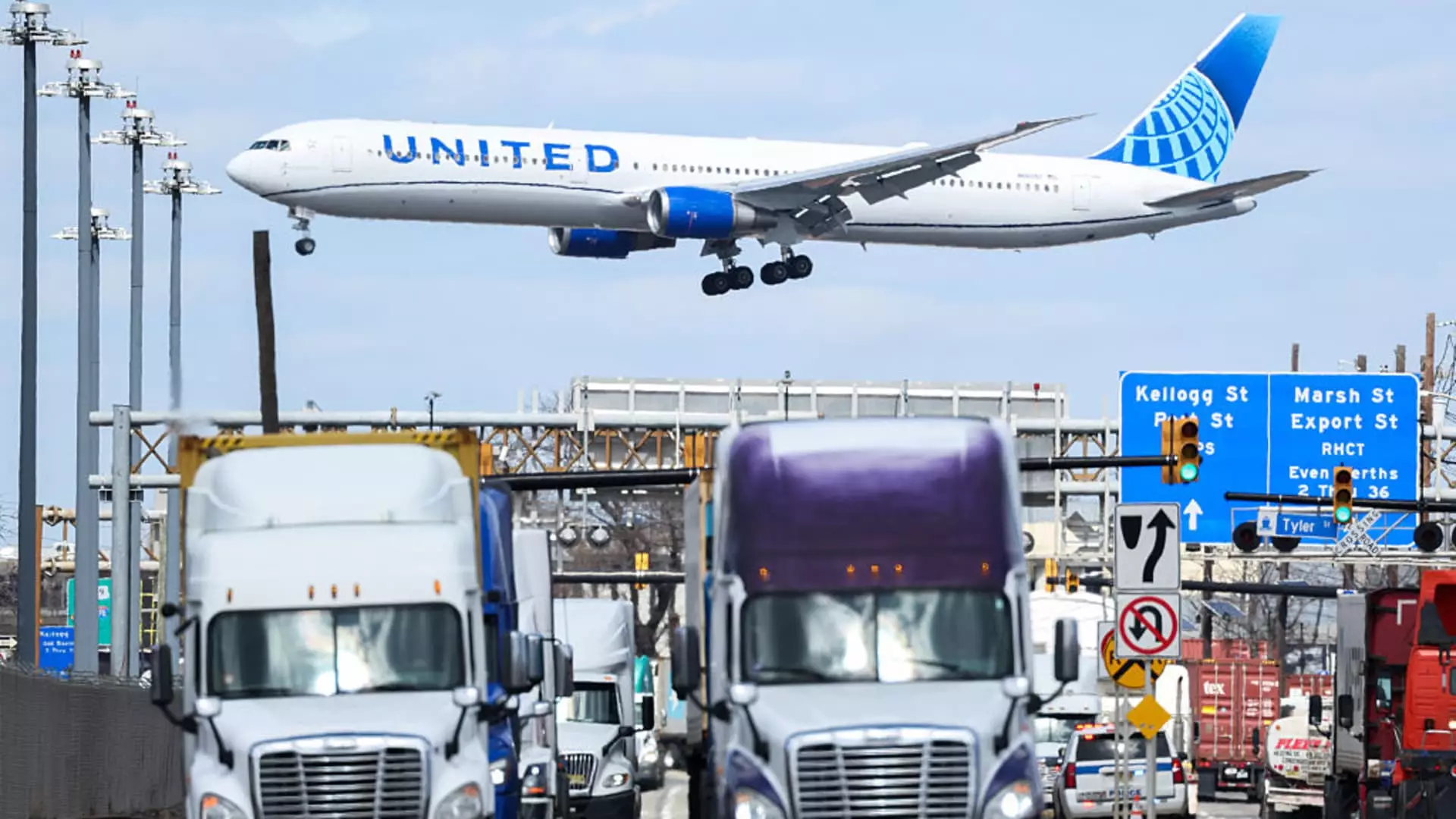As we navigate through today’s unpredictable economic landscape, United Airlines stands out with its steadfast yet cautious approach in delivering financial outlooks. Maintaining its original earning projections for the year, the airline nonetheless delivered a rare secondary forecast, symptomatic of its awareness of an economy fraught with uncertainty. Such a dual forecast is not merely a strategic precaution; it exemplifies a growing recognition among major corporations that economic signals, once seen as reliable indicators, have become increasingly ambiguous. In declaring that predicting the macroeconomic environment is “impossible,” United Airlines captures a sentiment that resonates deeply within a populace anxious about fluctuating job markets and rising costs—a sentiment magnified by ongoing trade conflicts and governmental shifts.
Profit Margins vs. Travel Demand
United has affirmed a hopeful vision for profitability, forecasting adjusted earnings per share between $11.50 and $13.50. However, in an economic downturn scenario—a forecast that feels more plausible with each passing day—this estimation tightens to a considerably narrower range of $7 to $9. Herein lies an essential paradox: while a recession could slash profits, the airline insists on maintaining a profit stream through comprehensive scheduling alterations. The carrier plans to diminish domestic flight capacity by 4%, reshaping its operational model to align with a discerning traveler base. Nevertheless, international bookings seem resilient, showcasing a paradox where consumer behavior shifts towards high-end, pricier travel options, untouched by recessionary fears. This could signal an underlying socioeconomic divide; while everyday travelers might retreat, a wealthier demographic continues to indulge its wanderlust.
Strategic Adaptability Under Pressure
United’s CEO Scott Kirby has expressed confidence in the airline’s multiyear strategic plan, a strategy seemingly designed to thrive under varied economic circumstances. Indeed, this adaptive mindset is paramount; it transforms a potential vulnerability—decreasing domestic demand—into an opportunity for reassessment and restructuring. Kirby’s assurance that United will leverage “industry-leading margins” during tough times is rooted in the airline’s adeptness at navigating shifting dynamics within the travel industry. While Delta Airlines has opted for a more cautious approach, halting growth predictions amidst market uncertainty, United stands firm in its pursuit of a competitive edge.
The Rollercoaster of Earnings
United’s latest financial quarter illustrates this nuance vividly. Transitioning from a $124 million loss in the prior year to a brave $387 million profit, the airline displayed a resilience that contrasts sharply with the broader anxieties echoing in the market. Adjusted earnings of 91 cents per share—in direct opposition to industry expectations—underscore potential present not just in numbers but in the overarching narrative of recovery. The fluctuations in unit revenue are telling; while domestic revenue slipped by approximately 3.9%, the international routes experienced an upward trajectory of over 5%. Herein lies a glimpse into our surprisingly bifurcated economy: domestic travelers contract, while international demand flourishes.
Pursuing Premium Experiences
The trend towards premium cabins is not just noteworthy; it symbolizes a shifting tide in consumer preferences. With a reported 17% increase in premium bookings compared to last year, United Airlines is perhaps not just weathering economic turmoil but actively redefining what consumer travel looks like in the modern age. The affluence within these travel choices speaks volumes about the polarization in consumer confidence and spending capabilities. In a society where economic disparities are pronounced, some are flourishing while others struggle, and United’s success in capturing this market segment is emblematic of that divide.
In a world where the duality of hope and caution governs corporate strategy, United Airlines serves as a case study in resilience. This airline illustrates the complexities of navigating an uncertain landscape while leveraging strengths in changing consumer behavior. It is precisely this navigational prowess that could signify not just survival but growth, a beacon of adaptability even in a seemingly adverse economic climate.



Leave a Reply